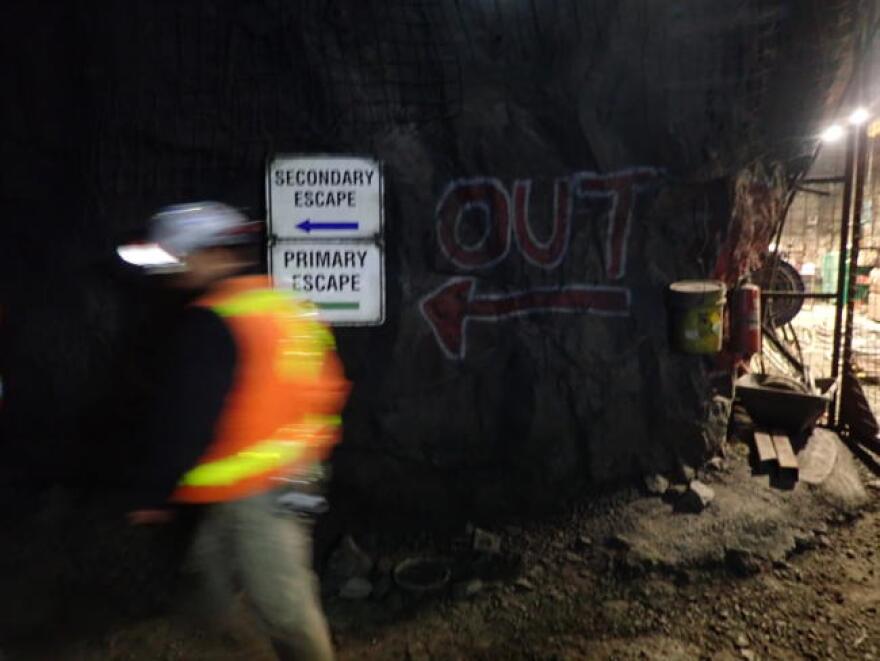The U.S. Forest Service last week green-lit an expansion of operations at Coeur Alaska’s Kensington Mine near Juneau.
It amends the mine’s 2005 plan of operations which it says would be necessary to extend the life of the gold mine for a minimum of 10 years.
“The phased approach for the Kensington project allows for continuous site operations in a safe, environmentally sound, technically feasible and economically viable manner, while complying with regulatory requirements,” Tongass National Forest Supervisor Earl Stewart said in a written statement. "I appreciate the time and open, candid discussions offered by those who submitted concerns during the objection period, and I encourage each of them to continue to engage as the Kensington project is implemented.”
The plan calls for — among other things — raising the main tailings dam by 36 feet and more than doubling the mine’s waste storage capacity in what were once two freshwater lakes about 45 miles north of downtown Juneau.
The Forest Service also allows the gold mine to increase its daily rate of production from 2,000 to 3,000 tons per day as part of its regulatory review.
Kensington’s general manager Mark Kiessling called the Forest Service’s decision an important milestone.
“It’s the culmination of quite a bit of time for us, starting in 2015, (we’re) real excited about it,” he said Friday. “And looking forward to moving on to that next stage.”
He said the expansion could allow the gold mine to operate into 2033 if the economics pencil out.
“But we still have work to do to identify reserves and resources that allow us to continue to operate into the future,” Kiessling said.
NOAA Fisheries raises concern
If there are proven reserves to run the mine for another 10 years, federal fisheries scientists urged the mining company to filter more of its liquid mine waste rather than store it long-term in ponds.
It also raised concerns of the long-term risk of a 124-foot tailings dam failing, which could pollute the marine environment.
“If the tailings dam were to fail, half of 8.5 million tons of mine tailings in the tailings pond would enter Berners Bay,” NOAA Fisheries hydrologist Sean Eagan said, reading from an agency statement summarizing some of the potential risks it had highlighted during the regulatory review.
“Crabs, ground fish and forage fish would be exposed to those tailings, which would have elevated levels of metal and other toxins,” Eagan said. “We do not know the amount of time it would take for the ocean bottom to return to pre-spill productivity levels.”
The Forest Service’s administrators said it didn’t make sense to alter the mine’s disposal plan and discounted increased risks from an expanded tailing treatment facility. In all, it accepted three of NOAA Fisheries eight recommendations, the federal fisheries agency said.
“Changing the tailings disposal now would require refining a new technique which could lead to accidents or mistakes that cause environmental harm,” Stewart wrote in his 32-page draft decision. “Current operations are protective of the aquatic environment as well as other resources and I do not foresee that changing by authorizing the mine to continue operating another 10 years into the future.”
Kiessling said Coeur Alaska stands by that analysis.
“I think it’s pretty clear on their standing of it,” Kiessling said, “but we do not believe there’s an enhanced risk.”
Kensington Mine began producing gold in 2010. It employs about 350 people, making it one of the largest private sector employers in Southeast Alaska.
Media’s daily newsletter to get our top stories delivered to your inbox.>


